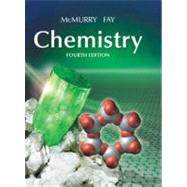
Note: Supplemental materials are not guaranteed with Rental or Used book purchases.
Purchase Benefits
What is included with this book?
| Chemistry: Matter and Measurement | |
| Atoms, Molecules, and Ions | |
| Formulas, Equations, and Moles | |
| Reactions in Aqueous Solution | |
| Periodicity and Atomic Structure | |
| Ionic Bonds and Some Main-Group Chemistry | |
| Covalent Bonds and Molecular Structure | |
| Thermochemistry: Chemical Energy | |
| Gases: Their Properties and Behavior | |
| Liquids, Solids, and Phase Changes | |
| Solutions and Their Properties | |
| Chemical Kinetics | |
| Chemical Equilibrium | |
| Aqueous Equilibria: Acids and Bases | |
| Applications of Aqueous Equilibria | |
| Thermodynamics: Entropy, Free Energy, and Equilibrium | |
| Electrochemistry | |
| Hydrogen, Oxygen, and Water | |
| The Main-Group Elements | |
| Transition Elements and Coordination Chemistry | |
| Metals and Solid-State Metals | |
| Nuclear Chemistry | |
| Organic Chemistry | |
| Biochemistry | |
| Table of Contents provided by Publisher. All Rights Reserved. |
The New copy of this book will include any supplemental materials advertised. Please check the title of the book to determine if it should include any access cards, study guides, lab manuals, CDs, etc.
The Used, Rental and eBook copies of this book are not guaranteed to include any supplemental materials. Typically, only the book itself is included. This is true even if the title states it includes any access cards, study guides, lab manuals, CDs, etc.